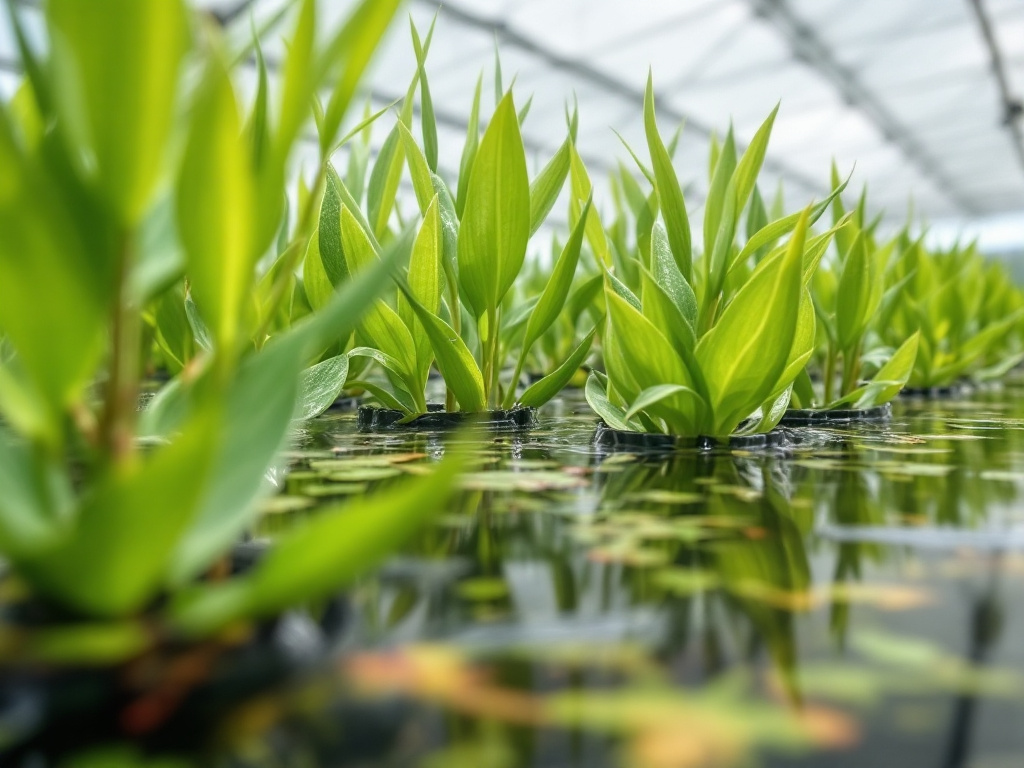Image generated by flux-ai.io & content generated by ChatGPT Version 4o-mini
New Technology Could Boost Local Aquaculture Efficiency and Save Money
As St. Johns County continues to grow, so does the demand for sustainable food sources, including locally raised fish and seafood. A recent scholarly article highlights an innovative technology that could help aquaculture facilities—those that farm fish and other aquatic life—cut costs and energy consumption significantly. This could be particularly relevant for our community, which has a strong agricultural sector and is seeing increasing interest in local food production.
The focus of the article is on Variable Frequency Drives (VFDs), a technology that optimizes how pumps operate in aquaculture systems. Pumps are crucial in these facilities, as they move water to keep fish healthy and maintain a stable environment for plant growth. However, traditional pumps often run at a single speed, leading to wasted energy and higher operational costs.
Imagine you have a garden hose with a nozzle that only sprays water at full blast. When you need just a little water to water your plants, you either let it spray too hard and waste water or you have to partially close off the nozzle, which uses more energy. This is similar to how traditional pumps work—they can waste energy when they’re running at full power even when it’s not needed.
VFDs allow these pumps to adjust their speed based on the actual requirements of the system. Instead of always pumping at full capacity, a VFD can reduce the pump’s speed when less water flow is needed. This not only saves energy but also reduces wear and tear on the equipment. According to the article, reducing the speed of a pump can lead to significant energy savings—up to 60% in some cases.
For local aquaculture farms in St. Johns County, where the average household income is high and residents are increasingly invested in sustainable practices, implementing VFDs could be a game-changer. The potential for cost savings can enhance profitability, allowing farmers to invest more in operations or even expand their business. This is particularly crucial in a community that has seen a population increase of nearly 44% over the past decade, leading to greater demand for locally sourced food.
One specific example from the article involved the University of Florida’s Tropical Aquaculture Lab, where a switch from a traditional pump to a VFD-controlled pump led to a 60% reduction in energy consumption. With aquaculture facilities often facing rising energy costs, these savings could translate into lower prices for consumers and more competitive pricing for local businesses.
Moreover, using VFDs can also promote better environmental practices. Lower energy consumption means a smaller carbon footprint, which is vital for maintaining the natural beauty of St. Johns County, known for its stunning landscapes and vibrant ecosystems.
As St. Johns County continues to develop, embracing technologies like VFDs in aquaculture can support both economic growth and environmental sustainability. Local farmers and producers looking to stay ahead in a competitive market should consider how these advancements can not only improve their bottom line but also contribute positively to the community and the environment.
In summary, VFDs offer a promising solution for local aquaculture facilities to save energy and reduce costs, enhancing the viability of sustainable local food production in our rapidly growing county. This technology could help ensure that St. Johns remains a leader in innovative agricultural practices, benefiting both farmers and consumers alike.
References
FA247/FA247: Energy Efficiency for Florida Aquaculture Facilities: Variable Frequency Drives. (n.d.). Ask IFAS – Powered by EDIS. https://edis.ifas.ufl.edu/publication/FA247

